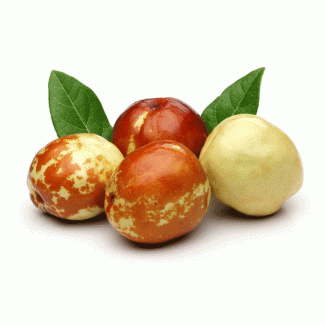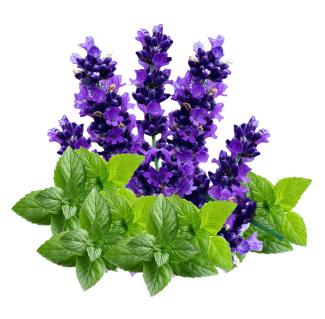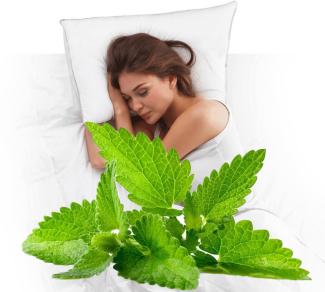
Calendula, scientifically known as Calendula officinalis, commonly referred to as marigold, is a plant with a rich history in herbal medicine. Its benefits, from its anti-inflammatory and antimicrobial properties to its potential role in wart removal, make it a valuable natural remedy. This document provides a thorough exploration of Calendula's benefits, the preparation of its extract, growth conditions, and the scientific research supporting its uses.
Benefits of Calendula
Anti-Inflammatory Properties
Calendula has been widely recognized for its anti-inflammatory effects, which are crucial in treating a variety of inflammatory conditions. The primary active compounds responsible for these effects include flavonoids, triterpenoids, and carotenoids. These substances inhibit the production of inflammatory mediators, such as cytokines and prostaglandins, thereby reducing inflammation and associated symptoms like redness, swelling, and pain.
- Applications: Calendula is effective in managing inflammatory skin conditions such as eczema, psoriasis, and dermatitis. It can also be used to reduce inflammation in internal conditions like gastritis.
Antimicrobial Activity
Calendula's antimicrobial properties are attributed to its essential oils, saponins, and polysaccharides. These compounds exhibit activity against a range of pathogens, including bacteria, fungi, and viruses. Research indicates that Calendula extracts can inhibit the growth of bacteria like Staphylococcus aureus and Escherichia coli and fungi such as Candida albicans.
- Applications: Calendula is used to prevent and treat infections in minor wounds, cuts, and skin infections. Its antimicrobial properties also make it beneficial in treating oral infections and promoting overall skin health.
Wound Healing
Calendula promotes wound healing through its ability to stimulate tissue regeneration and collagen production. Its extracts help in accelerating the repair of minor cuts, abrasions, and burns by enhancing cellular repair mechanisms and reducing oxidative stress.
- Applications: Calendula is commonly used in topical formulations for treating wounds, burns, and skin irritations. It supports faster healing and minimizes scarring.
Anti-Cancer Properties
Preliminary studies suggest that Calendula may have potential anti-cancer effects due to its high antioxidant content. Flavonoids and carotenoids in Calendula help neutralize free radicals, reducing oxidative damage that can lead to cancer development.
- Applications: Although more research is needed, Calendula's antioxidant properties might contribute to cancer prevention and support the health of individuals undergoing cancer treatment.
Digestive Health
Calendula has been traditionally used to support digestive health. It can alleviate symptoms of gastrointestinal disorders such as gastritis and peptic ulcers. The plant's anti-inflammatory and soothing properties help reduce inflammation in the digestive tract and promote mucosal healing.
- Applications: Calendula is used in teas and tinctures to manage digestive issues and support overall gut health.
Skin Health
Calendula's moisturizing and rejuvenating effects make it a popular ingredient in skincare products. It helps in hydrating the skin, reducing dryness, and improving overall skin texture.
- Applications: Calendula is included in lotions, creams, and soaps designed for sensitive or dry skin, enhancing skin hydration and texture.
Marigold Extract Preparation
1. Preparing Calendula Extract with Alcohol:
- Ingredients:
- Fresh or dried Calendula flowers
- High-proof alcohol (vodka or ethanol)
- Clean glass jar with a tight-fitting lid
- Strainer or cheesecloth
- Clean storage bottle
- Procedure:
- Harvesting and Preparing Flowers: Collect Calendula flowers, ensuring they are clean and dry. If using fresh flowers, pat them dry to remove excess moisture.
- Chopping Flowers: Chop the flowers into smaller pieces to enhance the extraction process.
- Infusing with Alcohol: Place the chopped flowers in a clean glass jar, filling it about halfway. Pour the alcohol over the flowers, ensuring they are completely submerged.
- Maceration: Seal the jar tightly and store it in a cool, dark place. Shake the jar gently once a day. Allow the flowers to infuse for 2-4 weeks.
- Straining: After the infusion period, strain the liquid through cheesecloth or a fine strainer into a clean storage bottle. Discard the plant material.
- Storage: Store the extract in a dark glass bottle away from light and heat. It can be used for up to a year.
2. Preparing Calendula Extract with Oil:
- Ingredients:
- Fresh or dried Calendula flowers
- Carrier oil (e.g., olive oil, almond oil)
- Clean glass jar with a tight-fitting lid
- Strainer or cheesecloth
- Clean storage bottle
- Procedure:
- Harvesting and Preparing Flowers: Collect and clean Calendula flowers. If using fresh flowers, allow them to dry slightly.
- Chopping Flowers: Chop the flowers to enhance the extraction process.
- Infusing with Oil: Place the chopped flowers in a clean glass jar. Fill the jar with the carrier oil, ensuring the flowers are fully covered.
- Maceration: Seal the jar and place it in a sunny, warm location. Allow the flowers to infuse in the oil for 2-4 weeks, shaking the jar occasionally.
- Straining: After the infusion period, strain the oil through cheesecloth or a fine strainer into a clean bottle. Discard the plant material.
- Storage: Store the oil in a dark glass bottle in a cool, dark place. It can be used for several months.
Wart Removal Using Calendula Extract
Preparation of the Affected Area:
Before applying Calendula extract, ensure that the skin around the wart is clean and dry. This step is crucial to enhance the effectiveness of the extract.
Application:
Apply a small amount of Calendula extract (either alcohol-based or oil-based) directly to the wart using a cotton swab or clean finger. Ensure that the wart is thoroughly covered with the extract.
Covering the Wart:
After application, cover the wart with a sterile bandage or adhesive plaster. This helps to keep the extract in place and prevent contamination.
Frequency:
For best results, apply the extract twice daily. Consistency is key, and the treatment may need to be continued for several weeks or until the wart diminishes.
Monitoring:
Monitor the treated area for any signs of irritation or adverse reactions. If redness, irritation, or discomfort occurs, discontinue use and consult a healthcare professional. Calendula extract should be used cautiously, especially for individuals with sensitive skin.
Marigold Growth Conditions
1. Climate and Temperature:
Calendula thrives in temperate climates and is generally tolerant of a range of temperatures. It prefers cooler weather and can withstand light frost. Optimal growing conditions include temperatures between 50-75°F (10-24°C). In areas with hot summers, Calendula benefits from partial shade to prevent overheating.
2. Soil Requirements:
Calendula grows best in well-drained, fertile soil. It prefers a slightly acidic to neutral pH (6.0-7.0). The soil should be rich in organic matter and have good moisture retention without becoming waterlogged. Adding compost or well-rotted manure can enhance soil fertility.
3. Light Requirements:
Calendula requires full sun to partial shade. It should receive at least 4-6 hours of direct sunlight per day. In regions with intense summer heat, providing some afternoon shade can prevent stress and prolong blooming.
4. Planting and Care:
Calendula can be started from seeds or seedlings. Sow seeds directly into the garden bed after the last frost or start them indoors 6-8 weeks before the last expected frost. Space plants 6-12 inches apart to allow for proper air circulation and growth. Water the plants regularly but avoid overwatering. Mulching can help retain soil moisture and suppress weeds.
5. Harvesting:
Harvest Calendula flowers when they are in full bloom, as this is when their medicinal properties are most potent. Regular harvesting can encourage continuous flowering and improve plant health. Cut the flowers in the morning after the dew has dried for the best quality.
Scientific Research on Calendula
Scientific research has supported many of the traditional uses of Calendula, validating its benefits through various studies:
Anti-Inflammatory and Wound Healing:
Research has demonstrated that Calendula extracts possess anti-inflammatory and wound-healing properties. Clinical studies have shown that Calendula can reduce inflammation and promote healing in skin wounds and irritations. A study published in the Journal of Clinical Medicine found that Calendula extract significantly improved the healing process in patients with dermatitis.
Antimicrobial Activity:
Multiple studies have investigated the antimicrobial properties of Calendula. Research published in Phytotherapy Research has confirmed that Calendula extracts exhibit antibacterial and antifungal activity, making them effective against a range of pathogens. The essential oils and saponins in Calendula are responsible for these effects.
Cancer Research:
Preliminary studies have explored Calendula's potential anti-cancer properties. Research in Cancer Letters indicated that Calendula extracts might inhibit the growth of certain cancer cells and reduce oxidative stress. However, more extensive studies are required to fully understand its role in cancer prevention and treatment.
Digestive Health:
The use of Calendula for digestive health has been supported by traditional medicine and some scientific research. A study in Evidence-Based Complementary and Alternative Medicine highlighted Calendula's potential to alleviate symptoms of gastrointestinal disorders and support mucosal healing.
Cosmetic and Skin Health:
Calendula's benefits in skincare have been validated by research on its moisturizing and anti-inflammatory effects. Clinical trials reported in Dermatology Research and Practice have shown that Calendula-based products can improve skin hydration and texture, making them effective for sensitive and dry skin.
Calendula officinalis, or marigold, offers a wide range of benefits supported by both traditional uses and scientific research. Its anti-inflammatory, antimicrobial, and wound-healing properties make it a valuable natural remedy. The preparation of Calendula extract, whether in alcohol or oil, is a straightforward process that enhances its therapeutic applications. Understanding the growth conditions for Calendula ensures successful cultivation, providing a sustainable source of this beneficial plant.
Scientific research continues to explore the full potential of Calendula, validating many of its traditional uses and uncovering new applications. For those considering Calendula for wart removal or other therapeutic uses, it is essential to follow proper preparation and application methods and consult healthcare professionals for persistent or concerning conditions.






